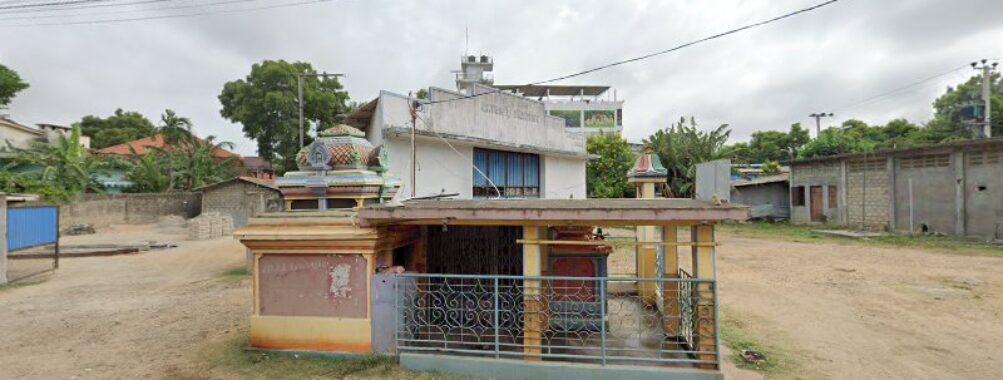
Muniappar Kovil
Table of Contents
Description
Muniappar Kovil is a quietly captivating Hindu temple that sits in the Northern Province of Sri Lanka, offering visitors a glimpse into a rich spiritual tradition that’s often overlooked by the typical tourist trail. Now, I’ve been to a fair share of temples around South Asia, and what struck me about this place was its genuine, unpretentious vibe. It’s not decked out in flashy gold or overwhelming crowds, but instead, it invites you to slow down and soak in the atmosphere—the kind of place where you can almost hear centuries of whispered prayers echoing through the air.
The temple’s architecture is modest yet meaningful, reflecting the local Tamil Hindu culture with intricate carvings and traditional motifs that tell stories of gods and legends. It’s a spot where history and faith intermingle seamlessly, giving you a sense of connection to something timeless. And, honestly, that’s what makes it stand out. You’re not just looking at a building; you’re stepping into a living narrative that locals hold dear.
Visitors often comment on the peacefulness here—something that caught me off guard at first because the temple is active and vibrant during festival times, but otherwise it offers a tranquil retreat from the hustle and bustle of daily life. It’s a great place to reflect, observe, or just marvel at the devotion that’s palpable in the air.
While it doesn’t boast the grandeur of some of the more famous temples in Sri Lanka, Muniappar Kovil’s charm lies in its authenticity and the warm welcome from the local community. It’s a place where you can experience spirituality in a raw, heartfelt way without the usual tourist fanfare.
Key Features
- Traditional Tamil Hindu temple architecture with detailed carvings and symbolic motifs
- Active place of worship with regular rituals and vibrant festival celebrations
- Quiet and serene atmosphere perfect for meditation and reflection
- Close interaction with local devotees and community, offering cultural immersion
- Located in a lesser-visited part of Sri Lanka, providing an off-the-beaten-path experience
- Accessible for travelers interested in religious history and South Asian spirituality
- Photogenic surroundings with authentic cultural scenes, ideal for mindful photography
Best Time to Visit
If you ask me, timing can totally change your experience here. The best time to visit Muniappar Kovil is during the dry season, which runs roughly from November to April. The weather is more predictable, making it easier to explore without getting drenched or dealing with muddy roads. Plus, the skies are clearer, which means better photos and a more pleasant atmosphere.
But if you want to catch the temple at its liveliest, try to plan your trip around one of the local Hindu festivals. It’s during these times that the temple really comes alive with colorful processions, music, and rituals that showcase the community’s devotion in full force. Just a heads-up though—during festivals, it can get crowded and a bit overwhelming if you’re not used to bustling religious events.
For those who prefer a quieter visit, weekdays outside of festival seasons are your best bet. You’ll find the temple peaceful and have more space to absorb the surroundings without interruptions.
How to Get There
Getting to Muniappar Kovil is part of the adventure. The temple is situated in the Northern Province, which means it’s a bit off the typical tourist radar, but that’s part of its charm. If you’re coming from Colombo or other major cities, the most straightforward way is to take a bus or hire a private car heading north. The road trip itself offers a glimpse into rural Sri Lankan life, with lush landscapes and small villages dotting the route.
Once you’re in the Vavuniya or Jaffna area, local transport options like tuk-tuks can get you to the temple. Don’t be shy to chat with the drivers—they often know the best routes and can share some local stories along the way. If you’re feeling adventurous, renting a motorbike could be a fun way to explore the surroundings at your own pace.
Keep in mind that public transport schedules can sometimes be unpredictable, so it’s wise to plan your return trip ahead or have a backup plan, especially if you want to avoid being stranded after sunset.
Tips for Visiting
Here’s where I get a little personal because visiting a place like Muniappar Kovil isn’t just about ticking off a spot on your itinerary—it’s about respect and being present. First off, dress modestly. It’s a temple, after all, so shoulders and knees covered are a must. You’ll see locals following this, and it’s a simple way to show you’re mindful of their customs.
Take your shoes off before entering the temple premises—yeah, it’s a bit of a hassle sometimes, but it’s part of the tradition and helps keep the place clean. Also, be prepared for some sensory experiences—incense, bells, chanting—that might feel unfamiliar but are integral to the vibe here. Embrace it rather than shy away.
Photography is usually allowed, but always ask first, especially during ceremonies. People appreciate when you respect their space and privacy. And if you get a chance to chat with the temple caretakers or local worshippers, do it. Some of the best travel stories come from these unexpected conversations.
Lastly, don’t rush. Give yourself time to wander around, sit quietly, and just soak it all in. Sometimes the best moments happen when you’re not looking for them.
Location
Places to Stay Near Muniappar Kovil
Find and Book a Tour
Explore More Travel Guides
No reviews found! Be the first to review!